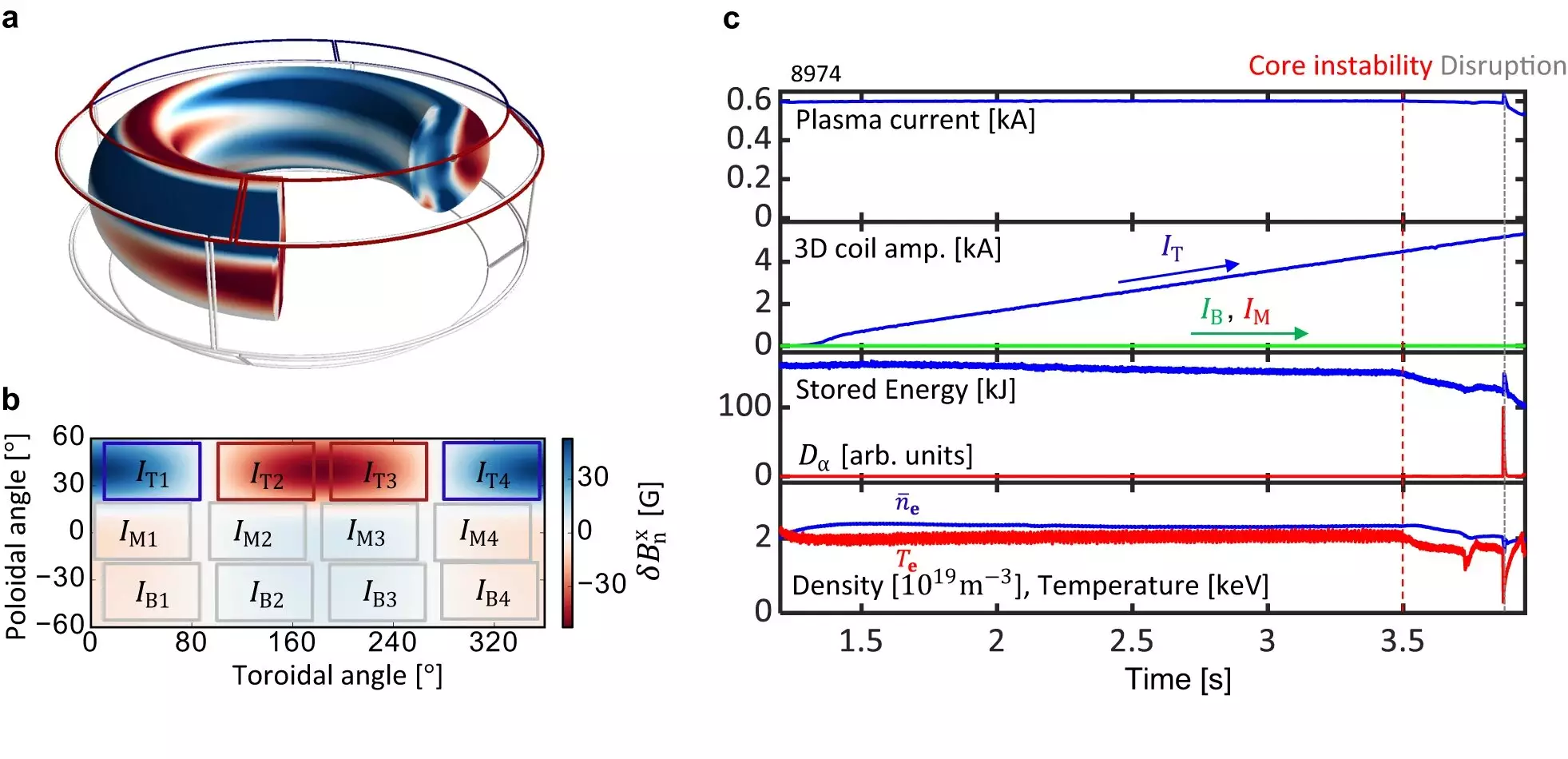The Japanese art of Kintsugi, which involves fusing broken shards back together with gold, serves as an inspiration for a novel approach to managing plasma as a power source. In a recent study published in the journal Nature Communications, scientists have demonstrated how imperfections in magnetic fields can be utilized to improve and enhance plasma stability. The research team, led by PPPL Physicist Seong-Moo Yang, has validated a systematic method for tailoring magnetic field imperfections, known as error fields, to make plasma suitable for use in fusion power generation.
Error fields, caused by defects in the magnetic coils of devices like tokamaks, have traditionally been viewed as a nuisance. These errors can disrupt plasma reactions and damage the fusion vessel’s walls. However, rather than trying to eliminate existing error fields, the researchers focused on applying additional magnetic fields to correct these imperfections. This innovative approach enhanced plasma stability without compromising its core, making it suitable for fusion power generation.
One of the key challenges in managing a fusion reaction is ensuring that both the core and edge of the plasma remain stable simultaneously. Achieving optimal temperature and density levels in both regions while eliminating instabilities is a complex task. By adjusting the error fields, the researchers were able to stabilize both the core and edge of the plasma simultaneously. This breakthrough has significant implications for the design of future tokamak fusion pilot plants, potentially increasing their efficiency and reliability.
The researchers are now working on an artificial intelligence (AI) version of their control system to further enhance efficiency. This AI system will enable real-time predictions and adjustments, crucial for maintaining plasma stability. By leveraging AI, the researchers aim to streamline the process of controlling plasma behavior, making it more responsive to changing conditions within milliseconds.
While the study primarily focused on error field correction using internal magnetic coils, future research involving coils outside the fusion vessel could offer valuable insights. With the fusion community exploring new configurations to mitigate the extreme heat generated by the plasma, external magnetic coils may present a viable solution. This shift in approach highlights the ongoing evolution in fusion research and the continuous quest for more efficient and sustainable energy sources.
The art of Kintsugi serves as a metaphor for embracing imperfections and turning them into strengths. By harnessing magnetic field imperfections to enhance plasma stability, researchers are paving the way for a more reliable and efficient fusion power generation. This innovative approach, combined with the integration of artificial intelligence, marks a significant milestone in fusion research and opens new possibilities for the future of energy production.



Leave a Reply